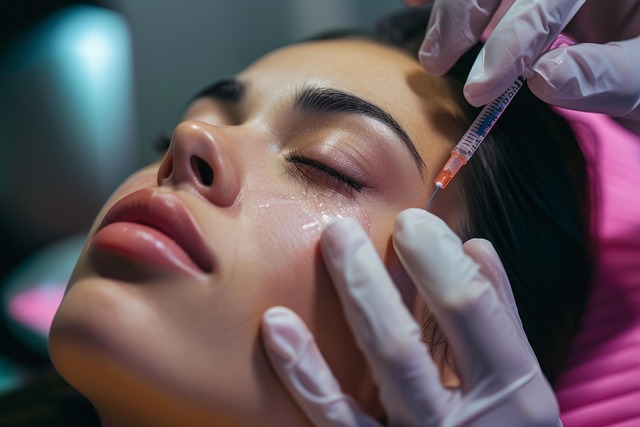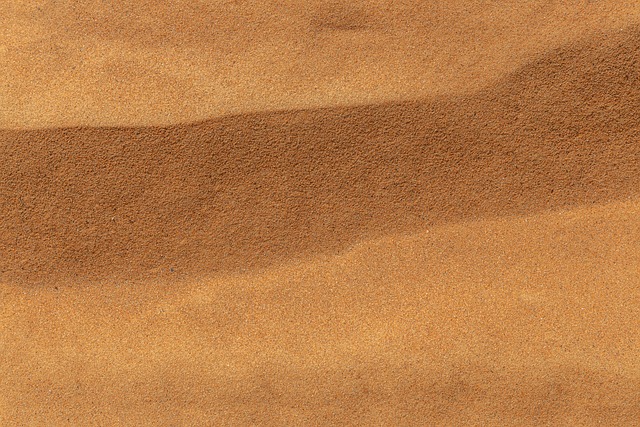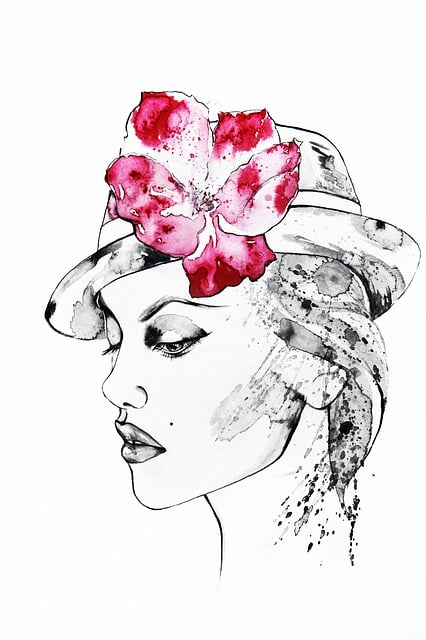Botox for fine lines and wrinkles on the forehead is a popular, non-surgical treatment that temporarily paralyzes muscles responsible for dynamic wrinkle formation caused by facial expressions. This FDA-approved procedure uses botulinum toxin to smooth age-related or expression-induced wrinkles, offering natural-looking results lasting 3-6 months. After a quick, minimally invasive treatment session with mild side effects, patients can resume daily activities immediately while following aftercare instructions from their dermatologist for optimal results and minimal risks. Botox is considered safe and effective when administered by qualified professionals using approved products.
“Uncover the secrets to a smooth forehead with Botox—the popular choice for reducing fine lines and wrinkles. This comprehensive guide delves into the science behind Botox, its role in minimizing forehead wrinkles, and the numerous benefits of this non-invasive treatment.
From understanding the causes of facial aging to navigating the step-by-step procedure and post-treatment care, you’ll explore everything you need to know. We address common concerns regarding safety and effectiveness, empowering you with the knowledge to make an informed decision about Botox for fine lines and wrinkles.”
Understanding Fine Lines and Wrinkles: Causes and Impact

Fine lines and wrinkles on the forehead are a common concern, often arising due to various factors. Understanding these causes is essential when considering Botox for fine lines and wrinkles as a potential solution. The skin’s natural aging process involves losing elasticity and collagen production, leading to the formation of wrinkles. Sun exposure, smoking, and certain lifestyle choices can accelerate this process, causing deeper creases and frown lines.
Genetics also play a significant role in determining the appearance of fine lines at an early age. Over time, facial expressions, especially those involving the eyebrows and forehead muscles, contribute to dynamic wrinkle formation. Botox for fine lines and wrinkles works by temporarily paralyzing these muscles, reducing the frequency and depth of facial expressions that lead to aging-related skin changes.
What is Botox? A Comprehensive Overview

Botox, short for botulinum toxin, is a highly effective treatment for addressing fine lines and wrinkles, particularly on the forehead. It’s a protein produced by bacteria that, when injected into specific muscles, temporarily paralyzes them. This action prevents the contractions that lead to dynamic wrinkles—those created by facial movements like frowning or squinting. By reducing these muscular contractions, Botox can significantly smooth out the appearance of age-related or expression-induced wrinkles, offering a more youthful and relaxed look.
For many individuals seeking a non-surgical approach to beauty enhancement, Botox has emerged as a popular choice. It’s FDA-approved for the treatment of moderate to severe frown lines between the eyebrows (often referred to as glabellar lines) and has expanded applications beyond that, including the reduction of forehead wrinkles, crow’s feet around the eyes, and even certain types of head aches. The procedure is minimally invasive, involving just fine needles and a topical anesthetic to ensure patient comfort. Results typically last 3-6 months, after which time a follow-up treatment can be administered for continued wrinkle minimization.
The Role of Botox in Reducing Forehead Wrinkles

Botox has emerged as a popular and effective solution for reducing forehead wrinkles, particularly in the context of botox for fine lines and wrinkles. This neurotoxin works by temporarily blocking specific muscles responsible for causing dynamic wrinkle formation. When injected into targeted areas like the glabellar (frown) lines and lateral forehead creases, Botox smoothens out these facial expressions, thereby reducing their depth and visibility over time.
The procedure is non-invasive and minimally painful, making it an appealing option for individuals seeking a natural-looking approach to skincare. By relaxing the muscles that contribute to wrinkles, Botox helps achieve a smoother, more youthful forehead appearance. This can boost confidence and provide a refreshed overall look, making it a preferred choice in the ever-growing field of aesthetic treatments.
Benefits of Botox Treatments for a Smooth Forehead

Botox treatments have become a popular non-surgical solution for achieving a smooth forehead and reducing the appearance of fine lines and wrinkles. This injectable procedure offers several advantages, making it an appealing option for those seeking to enhance their facial aesthetic. One of the key benefits is its ability to relax specific muscle groups in the forehead area, effectively preventing contraction and subsequent creasing of skin, leading to a smoother and more youthful-looking forehead.
Additionally, Botox for fine lines and wrinkles can provide significant improvements in overall facial symmetry and expression. By targeting particular muscles, it allows for a softer, more natural-looking expression, enhancing one’s appearance without appearing overdone. This minimal invasive approach is also highly safe when performed by qualified professionals, with temporary results that can last several months, offering a cost-effective way to maintain a youthful forehead contour.
The Procedure: Step-by-Step Guide to Botox Injection

The Procedure: Step-by-Step Guide to Botox Injection
Botox for fine lines and wrinkles on the forehead involves a simple, non-invasive treatment. The process begins with a consultation where a qualified medical professional assesses your skin and determines the appropriate amount of Botox needed. On the day of the procedure, the area to be treated is cleansed, ensuring optimal conditions for injection. A small needle is used to inject Botox into specific muscles in the forehead, carefully targeting the sites responsible for frown lines and wrinkles.
Each injection is precise, aiming to relax the muscle without causing discomfort. The entire process is usually quick, taking around 15-30 minutes. Post-treatment, mild redness or swelling may occur but typically subsides within a few hours. Patients can immediately return to their daily activities, though it’s recommended to avoid strenuous exercise for a short period.
Recovery and Aftercare: What to Expect After the Treatment

After your Botox treatment for fine lines and wrinkles on the forehead, it’s important to understand what to expect during the recovery phase. You may experience some mild side effects such as temporary redness, swelling, or discomfort in the treated area. These symptoms are usually minor and should subside within a few days. It’s crucial to follow your dermatologist’s aftercare instructions, which may include avoiding strenuous activities, applying cold compresses, and using gentle skincare products.
To ensure optimal results and minimize potential risks, refrain from touching or rubbing the treatment sites. You might notice results beginning to appear within a week, but it can take up to several days for the full effects of Botox for fine lines and wrinkles to become evident. Your dermatologist will schedule follow-up appointments to assess your progress and address any concerns, ensuring you’re satisfied with the final outcome.
Safety and Effectiveness: Addressing Common Concerns

Many people considering Botox for fine lines and wrinkles on their forehead often have concerns about safety and effectiveness. It’s natural to have questions, especially with the abundance of information available. Rest assured, when performed by a qualified medical professional using approved products, Botox is generally safe and effective for smoothing expression lines and crow’s feet.
The most common side effects are temporary redness, swelling, or mild discomfort at the injection sites. These usually subside within a few days. More severe reactions are rare, but if they do occur, patients should contact their provider immediately. When it comes to results, Botox can significantly reduce the appearance of fine lines and wrinkles within 2-4 days after treatment, with the full effect noticed after about a week. The effects typically last for 3-6 months, after which touch-up treatments may be needed.
